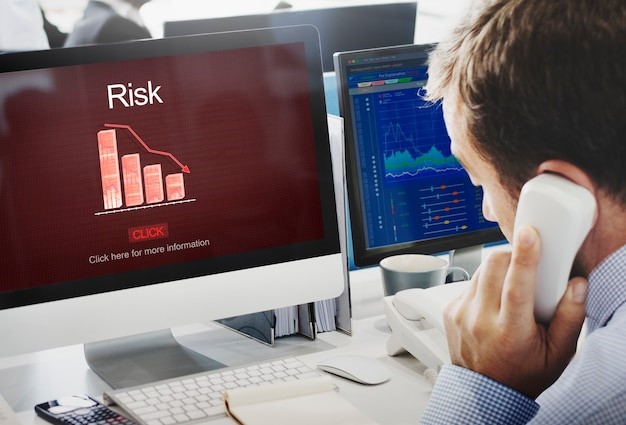


What is Liquidation in Crypto, and why is it important?
August 20, 2023
Cryptocurrency is a high-risk market with great potential. Some coins exhibit extreme price swings, and the market’s extreme volatility makes them more attractive to confident investors. Compared to the limited profit margins of stocks and precious metals, crypto trading provides opportunities to make significant profits.
One of the most fascinating features of crypto trading is using leverage. Leverage enables you to open more prominent positions and multiply your profit, but at the same time, it can multiply losses as well. Using leverage, you must fulfill your commitment in a specific period. If you overextend, you’ll get liquidated. But what exactly the liquidation means? Is there any way you can avoid it? Before opening your next margin position, you need to establish a careful trading strategy to avoid being liquidated. In the following, we will explore the ins and outs of margin trading and provide a handy primer on what liquidation means and how to avoid it.
Table of Contents
What does liquidation in crypto mean?
In simple terms, liquidation refers to turning an asset into cash. When using margin trades, you are borrowing money from a broker. The broker will provide you with credit to enable you to enter into more significant positions, and you are committed to compensating the borrowed money are a specific period of time.
Usually, traders use margin when they are speculating about a downward or rising market and make a position according to their predictions. But if the market doesn’t follow your predictions and move against your speculations, the broker sometimes forcibly closes your leveraged position to compensate for the losses and avoid further losses.
As a trader, if you fail to cover the margin requirement for your leverage position, your position will be forced to close. The process of liquidation happens automatically since you, as a trader, do not have enough money to keep your position open. In other words, you are not able to meet the margin call, and this is the risk of margin trading.
Should the market move against you, you might lose your entire collateral, and your position could be closed. And the broker will compensate the losses from your initial capital.
The liquidation can happen either forced or voluntarily. So far, we have talked about the mandatory and the first closure of a position, but you can voluntarily liquid your position when you decide to remove your phone from losing trade. A forced liquidation is applied by the lender, which is the broker platform, while the trader executes the voluntary liquidation to avoid further losses.
Read more: Crypto Exchanges
Leverage and liquidation
As mentioned previously, leverage is a fantastic feature a broker would provide you with, which allows you to profit from small price movements with the least initial capital; If you don’t take precautions, leverage can be a major disadvantage since it exposes you to more risks. When using derivatives, you need to monitor the market closely because the lightest price change can turn a profitable trade into a huge loss, and you’ll be forced to close your position.
Leveraging in crypto trading means borrowing money from a broker to enter trading positions you cannot enter without the borrowed money. In order to get a loan from a broker, you are required to provide collateral which is also called the initial margin. By using margin, you are committed to fulfilling the margin call. If you cannot meet the morning requirement for your position, you will be forced to close your position either voluntarily or mandatory.
To understand the futures trades, pay close attention to the following example: let’s say you have $100 in your trading account, and you want to use a leverage of 10x. The broker will automatically multiply your initial capital by 10 to let you open up everyone’s $1,000 trading position. By doing so, your profit and loss will be tenfold. If the market moves against you, the broker will have no choice but to liquidate your position.
Read more: How to trade cryptocurrencies

When does liquidation occur?
The nature of the crypto market is volatile, and due to the popularity of margin Trading, the volatility has increased. Margin trading is not unique to the crypto market, and you can use the same function when trading stocks, currencies, and commodities in Aron Groups. But due to the highly volatile nature of cryptography, derivatives and margin trades are more popular within the crypto Market.
Trading with leverage, you’re always at risk of liquidation, shoot the markets move against you to a certain degree. The broker will automatically liquidate your position if you lose a given amount of money to avoid further losses. As you are trading with borrowed money, the broker is permitted to do this. On the other hand, liquidation is a sort of insurance policy of last resort so the broker doesn’t lose more money.
Types of liquidation
There are two types of liquidation related to forced liquidation and voluntary liquidation, which we will discuss in the following:
Partial liquidation
Partial liquidation is a voluntary liquidation that happens at an earlier stage and before all of the initial capital is used. By doing so, traders’ goal is to avoid further losses. Usually, the terms of partial liquidation or determined on a preset agreement between the trade and the broker, so it pays to read the fine print.
Total liquidation
In this type of liquidation, your entire trading position will be sold to cover losses. In this case, all of the initial margin is used, and the broker forcibly closes your position to avoid further losses. Total liquidation happens when the trader fails to meet the Margin Call requirement, and it might also lead to a negative balance.
Forced liquidations
When a trader fails to meet the morning cold and does not have enough funds to keep a position open derivatives position, he will be subjected to force degradation and might have to pay an additional liquidation fee.
Long and short liquidations
As you know, the long and short-term refer to the type of trade you are making considering the market direction. As a short trader, you bet against price rises, and as a long trader, you bet price rises.
Crypto Futures liquidation
Crypto Futures is another crypto trading strategy that can lead to liquidation. In this strategy, a buyer agrees to purchase, and a seller agrees to sell a trading instrument at a fixed price at the predetermined date. But just like margin trading, futures trading is not unique to the crypto industry, and you can use it for stocks, commodities, and currency markets as well. There are two types of traders when talking about future contracts; a bearish trader will buy a futures contract betting on the price of an underlying asset device. If the market moves according to his speculation, he will make a profit; otherwise, the position will be liquidated.
A bullish trader will use future contracts hoping that the price of an underlying asset will fall, and if it does, he will make a profit; otherwise, the position will be liquidated either mandatory or voluntary.
To deal with margin and future trades, you must consider the possibility of liquidation and accept that it can save you from detrimental losses. Just like margin trading in futures trading, your position can be liquidated if you cannot meet margin call requirements or you do not have enough money to keep the position open.
Read more: Why you should trade cryptocurrency?

How to avoid crypto liquidation
Forex trading, regardless of the underlying asset, whether cryptocurrency, commodities, currencies, or stock indexes, is about being a good loser. Since it is impossible to avoid loss in general, you need to learn how to manage those losses properly. Here we will share some ways to avoid one of the most painful forms of loss liquidation.
Determine your risk percentage.
The first and most important thing you need to do as a trader is to determine the amount of money, you’re willing to risk in each position. Professional traders suggest that you never risk more than 1% to 3% percent of your account. By doing so, you will always be ready to exit the position should the market moves against you.
Use a stop loss.
You can benefit from stop-loss orders for opening and closing positions. By using a stop loss, you will reduce the amount of money you might lose if the market goes against your expectations. When using a stop loss to close positions, you’re actually saying that this is the maximum loss I can bear on this trade. It is recommended to use stop loss with the right risk management techniques to save your funds and have the chance to enter a new trade.
It would be best if you placed a stop loss at a good distance from where your liquidation price is located to reduce the chance of being liquidated. The crypto market is very unpredictable and volatile, and it is necessary to use a stop-loss order to control your losses and protect your trading funds.
You know that the advantage of using a stop-loss order is to prevent yourself from making rash decisions but remember using a stop-loss order doesn’t crunchy your success, but it will reduce the pace at which you lose money.
Read more: Cryptocurrencies Market For Beginners

Decrease position size and leverage
Another useful strategy to avoid liquidation is to trade smaller. Open a smaller position size to reduce your risks and chances of liquidation. When opening smaller positions, you need less leverage, and you will reduce the risk of liquidation.
Monitor your position
It is wise to monitor and open a position to fill the market and exit the position should the market moves against you. In this case, you will voluntarily close your position, and you’re not required to pay an additional liquidation fee, and you can act at an early stage to voice for the losses.
Manage risks to avoid liquidation.
Leverage positions are lucrative functions a broker will provide you with, there are perfect for making a quick profit, but they can also result in the liquidation of your account and losing initial capital. Despite the strategy you’re using to trade Forex, whether it is leveraged positions or future contracts, you are supposed to use reliable trading tactics along with risk management techniques like stop-loss orders to mitigate the chances of liquidations.
When trading highly volatile asset classes like cryptocurrency, you can use leverage positions as a smart move and multiply your profit, but it is a high-risk strategy and can exacerbate your losses. Always monitor your open positions, use leverage based on market conditions, and employ risk management tools to avoid further losses.
You can also use a demo account to test your ideas before trading real money. Using a demo account, you are provided with a simulation trading platform with a risk-free environment to test your trading ideas and strategies before real trading. No matter how experienced or amateur you are, it is recommended to use a demo account to test new markets and new assets; especially if you are completely unfamiliar with the cryptocurrency market, rely on something other than your Forex experience when starting to trade crypto. Although the strategies are the same, the nature and the extent of the volatility of the crypto market are entirely different.














